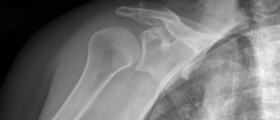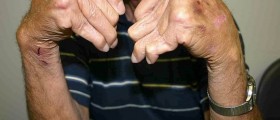
What is a frozen shoulder?
There are a lot of people who are not aware what frozen shoulder actually is a condition. A person who cannot move the shoulder joint in all directions or can but with limited range, is considered to have a frozen shoulder. The shoulder joint does not only not move when the person tries to, but also when the doctor moves it and the person relaxes the hand. Frozen shoulder is also known as adhesive capsulitis.
The causes of frozen shoulder
There are lots of reasons why a person may suffer from a frozen shoulder. Inflammation, scarring, thickening and shrinkage of the capsule that is around the normal shoulder joint are some of the most common causes. If a person suffers from a certain injury to the shoulder, that may also lead to frozen shoulder. Tendinitis, bursitis and rotator cuff injury are the most common injuries which lead to a frozen shoulder. A person who suffers from diabetes, chronic inflammatory arthritis of the shoulder or had a chest or breast surgery recently is more prone to suffer from a frozen shoulder.
How is frozen shoulder diagnosed?
When a person comes for a checkup because of the limited movement of the shoulder, it is suspected that he or she is suffering from a frozen shoulder. In order to find out whether there is an underlying disease, the doctor will order a blood test, an X-ray and exam the patient. A patient’s history is also looked at. In some cases, the doctor may even order an MRI scan. What conditions can mimic a frozen shoulder?
A limited movement of the shoulder is not caused only by a frozen shoulder. A person may experience swelling, pain and stiffness of the joint due to the inflammation of the shoulder joint or the muscles around the shoulder as well. An injury to the tendons around the shoulder can also limit the motion of the shoulder. The treatment for a frozen shoulder
In most cases of a frozen shoulder, a person will undergo an aggressive combination of anti-inflammatory medication, cortisone injections to the shoulder and physical therapy. It is important that the treatment is aggressive because this condition can become permanent. Physical therapy usually includes ultrasound, electric stimulation, certain exercises and ice packs. The severity of the condition will determine the length of the therapy. Avoiding reinjuring the shoulder during the therapy is essential. This is why people should avoid sudden movements and lifting heavy stuff.














-Arthritis_f_280x120.jpg)

-Symptoms,-Diagnosis,-Treatment_f_280x120.jpg)
Your thoughts on this
Loading...